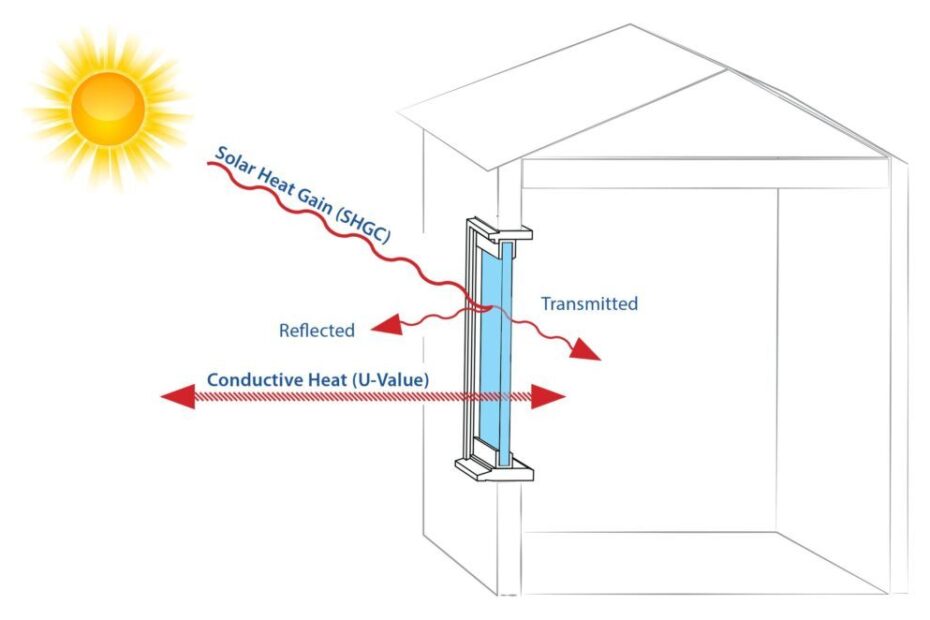The Solar Heat Gain Coefficient (SHGC) is a measurement used to understand how much solar radiation (and thus heat) a window will allow into a building. This coefficient ranges from 0 to 1; a lower SHGC means that less solar heat is transmitted through the window, providing greater shading and cooling effect.
European windows, particularly those designed for high energy efficiency, often have low SHGC values due to the use of advanced glazing technologies.
Let’s look at some of the features of European glass that affect SHGC:
- Low-E coatings: These thin, transparent layers of metal or metal oxide are applied to the glass surface to reduce heat transfer. They can be fine-tuned to allow visible light to pass through while reflecting infrared heat back, thus reducing the solar heat gain.
- Double or Triple Glazing: European windows often use double or triple glazing, which means they have two or three panes of glass with spaces in between. These spaces can be filled with inert gases like argon or krypton that provide insulation and reduce heat transfer, thus lowering the SHGC.
- Tinted or Reflective Glass: Some European windows use tinted or reflective glass to reduce SHGC. These windows reflect more sunlight and absorb more solar heat than clear glass, helping to keep interiors cooler.
- Warm-Edge Spacers: These are used to separate the glass panes in a window. Warm-edge spacers are made of materials that reduce heat transfer and help lower the SHGC.
When selecting windows for a building, the SHGC is an important factor to consider. In colder climates, a higher SHGC can be beneficial as it allows more heat to enter the building and reduce heating costs. In contrast, in warmer climates, a lower SHGC is generally preferred to keep interiors cooler and reduce air conditioning needs. Therefore, the choice of SHGC in European windows should align with the specific climate and energy efficiency goals of a building.
